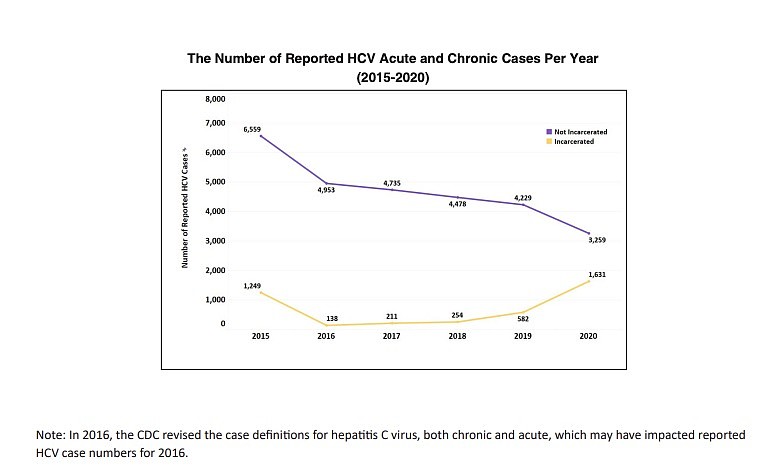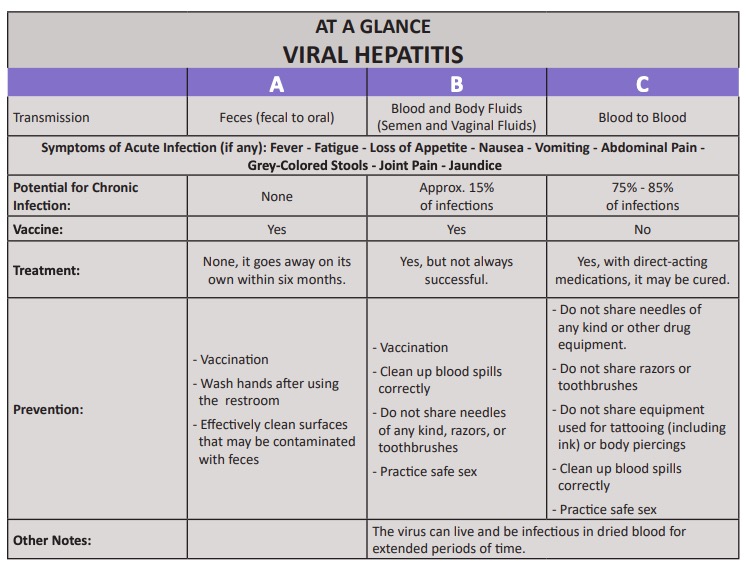The Missouri Department of Health and Senior Services announced its plan to eliminate hepatitis C from the state Friday.
The "Show Me the Cure" plan is intended to improve access to testing and patient-centered treatment services to combat the hepatitis C virus, according to a news release.
The plan focuses on access to services, provider development, education, collaboration and awareness, surveillance, and policy and advocacy, the release states.
"(It) provides a roadmap for the state to use to eliminate hepatitis C," Alicia Jenkins, chief of the DHSS Bureau of HIV, STD and Hepatitis, said in the release. "This plan was developed in collaboration with diverse partners from across the state, which was essential for ensuring the needs of Missourians were addressed in the plan."
Hepatitis is a viral infection of the liver, typically caused by one of three common viruses in the United States, each with a letter designation -- A, B or C.
Each is transmitted differently than the others -- hepatitis A is transmitted through close personal contact with people who are infected or through eating contaminated food or drink, according to the Centers for Disease Control and Prevention (CDC). Vaccines can prevent it, and there is no treatment. It generally goes away within six months.
Hepatitis B is spread when blood, semen or other body fluids from a person infected with the virus enters the body of someone who is not infected. Vaccinations can prevent it.
Hepatitis C is spread through contact with blood from an infected person. For some, according to the CDC, hepatitis C is a short-term illness, but for more than half of people who become infected with it, it becomes a chronic infection. The Show Me the Cure plan reports that it may become chronic in 75-85 percent of cases. It may be cured.
The most common exposure to hepatitis C in the United States comes through shared needles from injection drug use. Another common transmission is birth to an infected mother.
It may also be spread through: unprotected sex; shared personal items, such as razors or toothbrushes; unregulated tattooing; rare receipt of donated blood or blood products; and "needle stick" injuries in health care settings.
CDC recommends testing for all pregnant women during any pregnancy and one-time testing for hepatitis C for all adults.
Symptoms include fever, fatigue, dark urine, clay-colored stool, abdominal pain, loss of appetite, nausea, vomiting, joint pain and jaundice. However, according to the DHSS plan, many people remain asymptomatic, even when the infection progresses to a chronic condition.
The plan uses five key points -- improved access to testing, improve treatment providers' resources, educate the public about transmission sources, create a surveillance system that focuses on data, and increase prevention, testing and treatment through policy development.
First, to improve testing, it is crucial that access to tests is improved, according to the report. About 40 percent of patients are unaware of their hepatitis C status.
"Because (hepatitis C) often has no symptoms, the only way to know is to get tested," the report states. "Currently, there are not adequate resources available for testing and linkage to care."
Recommended resolutions involve distribution of rapid test kits to local public health agencies and federally qualified health centers, increased screening events for at-risk populations, promotion of testing, creation of partnerships with laboratories to reduce costs and identification of a list of patient-assistance programs.
Second, provider capacity needs improvement.
"In many areas of the state, travel to specials may be miles away or have limited availability," the report states. "Referral to a specialist is only necessary for those that are managing children with hepatitis C and patients who have certain hepatitis C-related sequelae (condition resulting from a disease) or advanced disease, including those requiring a liver transplant."
Recommendations include development and distribution of guides and resource tools for health care providers, training of providers to implement services, engagement of medical schools and training programs, treatment education of staff at the Missouri Department of Corrections, development of online resources for providers, and promotion of programs to increase treatment among people on Medicaid.
Third, educate the public on testing and resources.
"Many people do not know about the risks associated with hepatitis C, and it is often confused with other hepatitis viruses," the report states.
Recommendations including providing more public data, such as geospatial maps, identifying gaps in surveillance systems, crating fliers, magnets and materials for distribution, and coordinating a statewide social and digital media public health campaign.
Fourth, create a "robust" hepatitis C surveillance system, in which data may be shared.
"Until 2021, Missouri did not receive surveillance funding specifically for hepatitis C. Hepatitis C is a reportable disease in Missouri, and there is data available," the report states.
The fifth pillar asks that the state increase testing and treatment services.
Missouri must increase prevention.
"The Missouri viral hepatitis stakeholder workgroup, MO HEPC, and regional workgroups across the state have a vested interest in hepatitis elimination, policy change, patient care and resource development to assist Missouri residents better," the report said. "This objective helps establish a platform for organization stocks share resources, promote education, reduce barriers, provide technical assistance and build system capacity."


